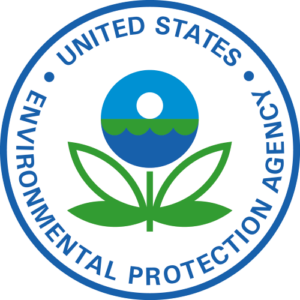
The Interstate Natural Gas Association of America filed comments to the U.S. Environmental Protection Agency’s advanced notice of proposed rulemaking (ANPRM) associated with residual risk and technology review for 22 industrial source categories subject to National Emission Standards for Hazardous Air Pollutants. The ANPRM was published in the Federal Register on March 29, 2007 at 72 FR 14734.
EPA has grouped these sources as Risk and Technology Review, Phase II, Group 2. EPA is soliciting comment on hazardous air pollutant (HAP) emissions and other model input data that EPA intends to use to assess residual risk from these 22 industrial major source categories. INGAA is especially interested in the data associated with 40 CFR, Part 63, Subpart HHH, also known as the Transmission and Storage (T&S) MACT and is submitting this letter to Docket ID No. EPA-HQ-OAR-2006-0859 based on review of the ANPRM and associated data provided by EPA for the T&S MACT source category.
EPA is soliciting public comment on data the agency intends to use in analyzing risks from air toxics emitted from 22 industrial sectors. EPA will use the data to conduct risk analyses to determine if additional standards are needed to address remaining risks from the 22 sectors. In addition, EPA will perform a technology review for each sector. These analyses are required by the Clean Air Act as part of the process to assess the risks remaining after these industrial sectors have complied with earlier technology based emission standards. The Subpart HHH T&S MACT is one of these industrial sectors, and INGAA comments are in regard to this industrial sector.
In the Source Category Data Summary document for natural gas transmission and storage provided by EPA on its website, EPA specifically requests comment on the following:
· Information regarding the facilities in the ANPRM dataset and whether any are not T&S sources;
· Whether the database facilities are major or area HAP sources;
· Uncertainty regarding formaldehyde emissions from the source category;
· Information on the potential for mercury emissions; and
· Review of coordinates for identified facilities.
INGAA’s comments address these and other issues in the ANPRM. INGAA members constitute the vast majority of interstate pipeline operators in the U.S. and review of the database focused on INGAA member facilities. However, T&S MACT facilities and facilities in the EPA database include intrastate pipeline operators, upstream operators, and distribution companies with storage. Thus, a detailed review was not completed for every facility in the dataset. INGAA’s comments are detailed below and include:
1. Based on INGAA’s review, 50 T&S facilities in the dataset are operated by INGAA members. Of these facilities, 33 are area sources. An additional four facilities are not T&S facilities and an additional 8 facilities do not include a glycol dehydrator. Seven of the 50 facilities are T&S facilities that were included in the ONG data set. Due to the prevalence of problems with the dataset, EPA should provide an additional opportunity for stakeholder comment on the T&S MACT dataset after revised data are available.
2. INGAA does not support EPA’s proposed approach that would assume all facilities in the NEI dataset are major sources unless otherwise verified. It is apparent that many facilities are not major sources and that the dataset has numerous errors. EPA should ensure that the facilities included in the analysis are major HAP sources.
3. For natural gas facilities, formaldehyde emissions are typically associated with natural gas combustion, especially for reciprocating internal combustion engines. The T&S MACT affected equipment is the dehydrator reboiler vent. Risk review under this rulemaking should not consider HAP emissions from co-located combustion units such as engines or boilers that are addressed by separate MACT standards.
4. Acrolein is identified as the key non-carcinogenic HAP emitted by T&S facilities. Only one facility in the database reported acrolein emissions. INGAA has identified this facility and confirmed that the acrolein emissions are from internal combustion engines and not equipment associated with the T&S MACT. The acrolein data should not be considered for the T&S source category.
5. In response to EPA’s request for information on mercury, INGAA notes that mercury is not an issue for T&S facilities.
6. The database presents annual emissions and EPA indicates in the ANPRM that short-term exposure analysis will assume that maximum hourly emission rates are ten times higher than the annual average hourly rate. This assumption is arbitrary and inappropriate.







